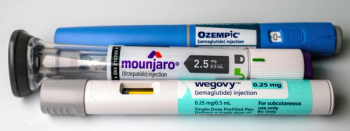
New Screening Tool for Adult Patients with Type 2 Diabetes
A new study reports valuable new grip strength metrics that provide health care practitioners with an easy-to-perform, time-efficient screening tool for type 2 diabetes.
A new study reports valuable new grip strength metrics that provide health care practitioners with an easy-to-perform, time-efficient screening tool for type 2 diabetes (T2D).
Muscular weakness has been known to be associated with T2D in otherwise seemingly healthy adults, however, previous research had not found a way to assess this reliably. The current study was able to identify consistent grip strength cut points relative to body weight, gender, and age group in a large, nationally representative sample of participants prescreened for comorbid conditions, such as hypertension.
“As the type 2 diabetes patient population continues to increase in the United States, diagnosing this disease in its early stages is becoming increasingly more important for preventing complications caused by blood vessel damage associated with diabetes. Our study identifies the levels of handgrip strength/weakness that correlate with T2D in otherwise healthy men and women, according to their body weights and ages. Healthcare providers now have a reliable test to detect it early before such complications set in," said lead investigator Elise C. Brown, PhD, in a press release.
T2D is linked to increased cardiovascular-related morbidity and mortality. Undiagnosed prediabetes and T2D in the United States in 2017 were estimated to cost $43.4 and $31.7 billion, respectively. This economic burden highlights the need for better early detection efforts. T2D is asymptomatic in its initial stages and a prompt diagnosis can prevent or delay vascular complications, such as neuropathy, retinopathy, and nephropathy.
Researchers analyzed survey data from the 2011-2012 and 2013-2014 National Health and Nutrition Examination Survey to establish normalized grip strength (grip strength relative to body weight) cut points for T2D risk. Inexpensive portable handgrip dynamometer devices were used to determine hand and forearm strength.
The study authors controlled for sociodemographic factors such as race, education, poverty, gender, age, lifestyle factors, and waist circumstance. The investigators then identified the grip strength levels of at-risk patients who were otherwise healthy. These levels are presented with age- and sex-specific grip strength cut points that correspond to varying body weights to increase the ease of use for practitioners as indicators of when further diabetes diagnostic testing is warranted.
"Given the low cost, minimal training requirement and quickness of the assessment, the use of the normalized grip strength cut points in this paper could be used in routine health screenings to identify at-risk patients and improve diagnosis and outcomes," Brown added. "This type of impactful research can make a difference for practitioners and individuals and is a key focal point of what Oakland University is all about. We are trying to improve the health and wellbeing of individuals."
Reference
- Evaluating grip strength to identify early diabetes [press release]. Elsevier website. Published April 6, 2020. https://www.elsevier.com/about/press-releases/research-and-journals/evaluating-grip-strength-to-identify-early-diabetes. Accessed April 6, 2020.
Newsletter
Stay informed on drug updates, treatment guidelines, and pharmacy practice trends—subscribe to Pharmacy Times for weekly clinical insights.

















































































































































































































